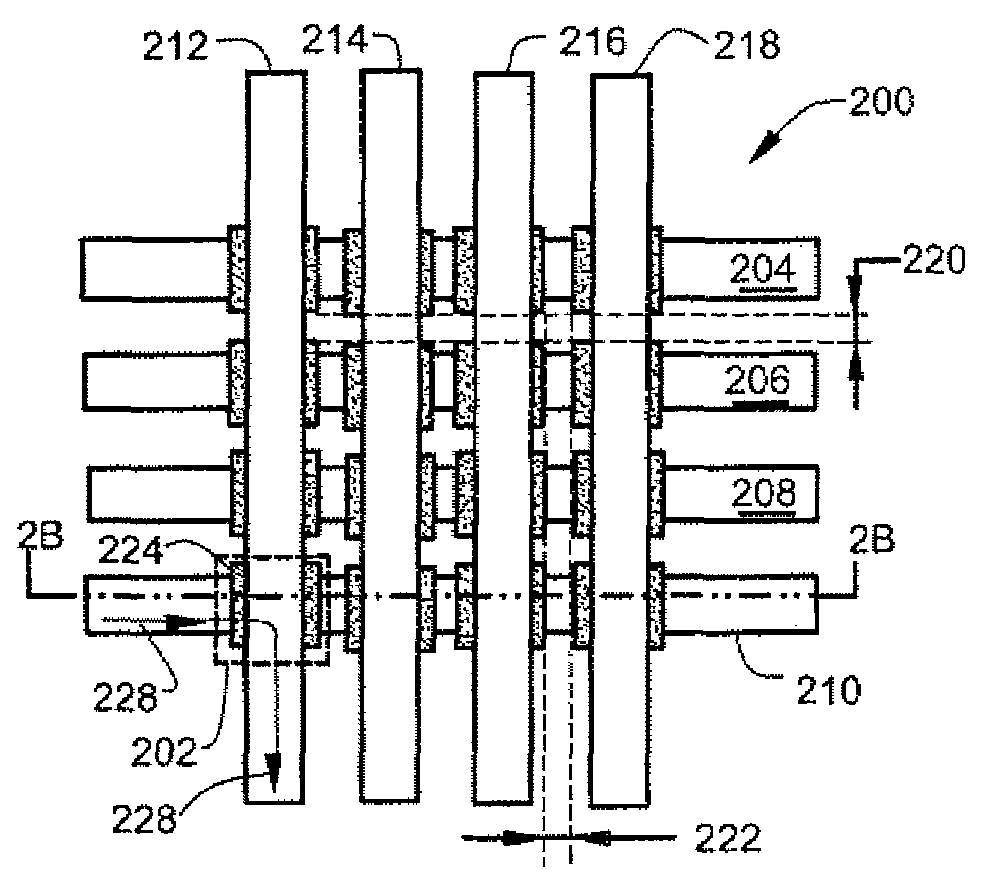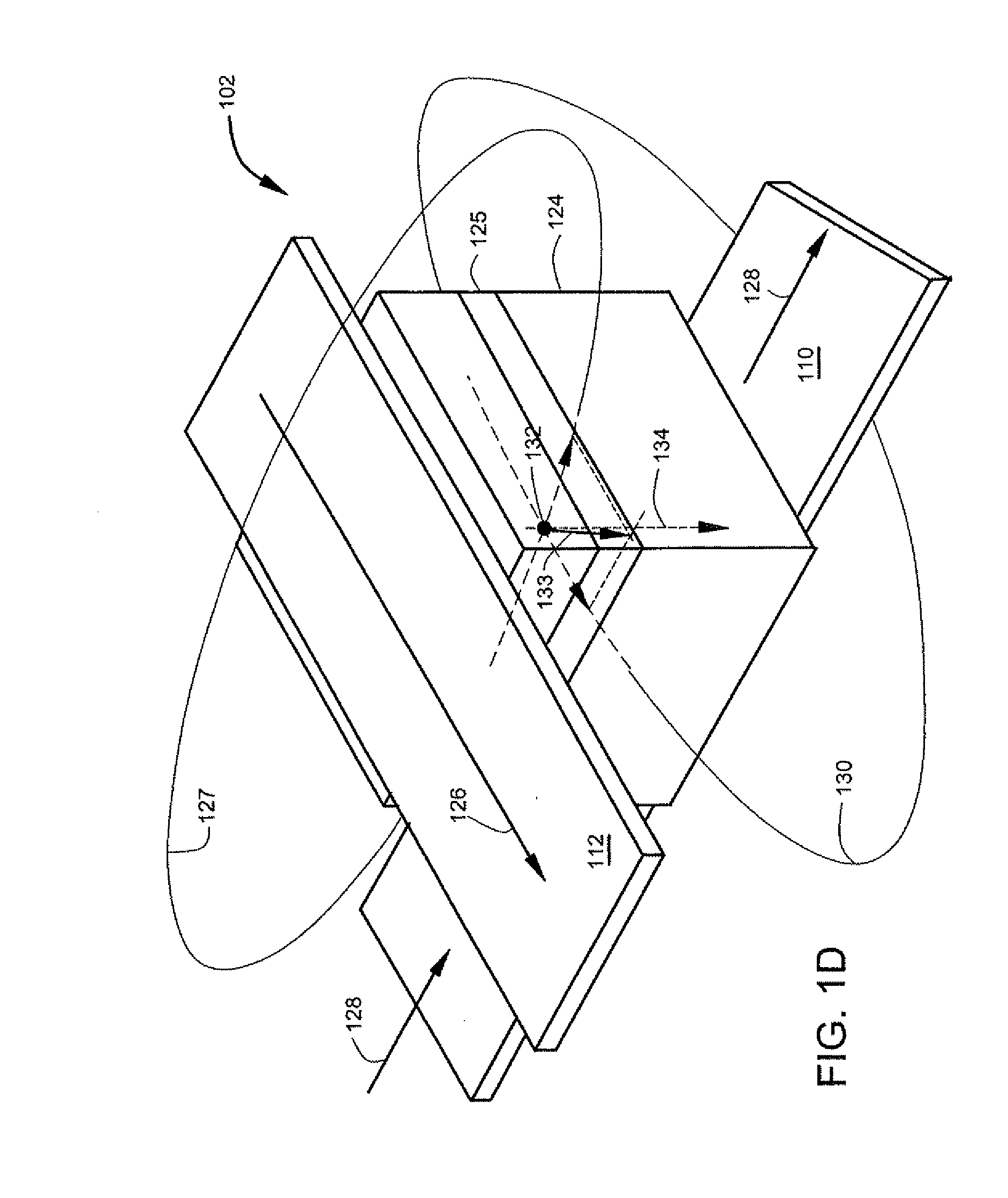Magnetoresistive sensor memory with multiferroic material
a multi-ferroic material and magnetic anisotropy technology, applied in the field of data memory, can solve the problems of limited size of existing solid-state non-volatile memory devices such as mram, flash memory, spin ram, and limited practical performance in terms of long-term non-volatile or in terms of memory size, and achieve the effect of lower magnetic anisotropy and higher magnetic anisotropy
- Summary
- Abstract
- Description
- Claims
- Application Information
AI Technical Summary
Benefits of technology
Problems solved by technology
Method used
Image
Examples
Embodiment Construction
[0014]According to one aspect an array of memory cells comprises row write conductors and column conductors that cross. The row conductors cross the column conductors at cross points. Memory cells are located between the row and column conductors at the cross points. Individual memory cells are addressable at the cross points. Each memory cell comprises a magnetoresistive sensor that includes a layer of multiferroic material. The multiferroic material receives a modulation potential that modulates the magnetic anisotropy of the multiferroic material. The modulation provides a lower magnetic anisotropy during a write interval. In another aspect, magnetic anisotropy can also be increased during a read interval. In yet another aspect, a free layer in the magnetoresistive sensor comprises the multiferroic material.
[0015]As used in this application, the term “multiferroic material” refers to a material that has both piezoelectric and ferromagnetic properties. Of particular interest are m...
PUM
 Login to View More
Login to View More Abstract
Description
Claims
Application Information
 Login to View More
Login to View More - R&D
- Intellectual Property
- Life Sciences
- Materials
- Tech Scout
- Unparalleled Data Quality
- Higher Quality Content
- 60% Fewer Hallucinations
Browse by: Latest US Patents, China's latest patents, Technical Efficacy Thesaurus, Application Domain, Technology Topic, Popular Technical Reports.
© 2025 PatSnap. All rights reserved.Legal|Privacy policy|Modern Slavery Act Transparency Statement|Sitemap|About US| Contact US: help@patsnap.com



